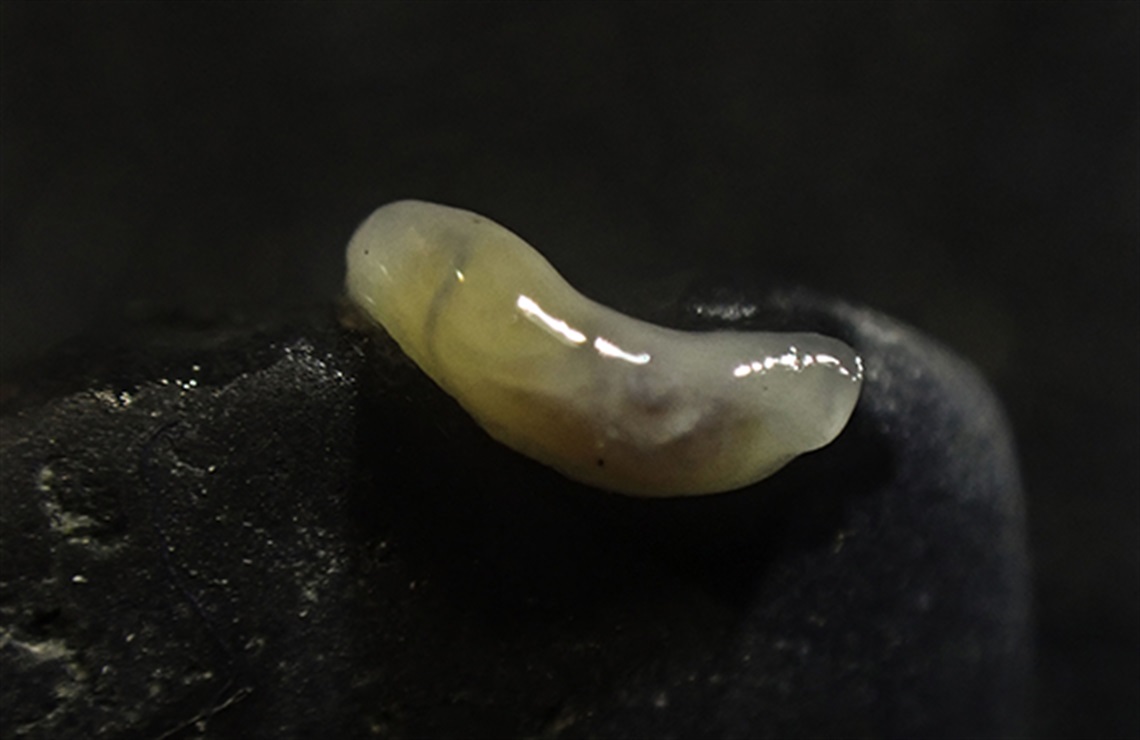
Precious things often come in small packages, and they don’t come too much smaller than our resident marine slug Smeagol hilaris (Heterobranchia, Otinidae).
Given it is ³Ô¹ÏÍøÕ¾ Threatened Species Day (7 September) we thought we’d shine a light on Smeagol.
This air breathing marine slug, which is critically endangered, has a translucent white body that checks in at 5 to 6mm long.
The only known populations on the NSW South Coast at Merry Beach (Kioloa) and Storm Bay (Kiama).
As an air breather, Smeagol is found in the mid to upper intertidal zone living under rocks and stones.
It manages to deal with the strong waves and tumbling rocks at Storm Bay by migrating down into gutters between the rocks, taking advantage of air pockets to survive.
The Storm Bay population, estimated at little more than 500, was only discovered in April last year.
Scientists are concerned about them being so close to a busy town centre.
However, they hope raising awareness of this tiny animal will help ensure the survival of one of our more unusual ‘locals’.
So, please don’t actively look for this tiny critically endangered creature, as it risks not only disturbing them but also introducing diseases.
Why is the genus is called Smeagol?
Yes, it’s a nod to Tolkien’s underground creature, Gollum, however it is not because it is a colourless, amorphous shadow dweller.
Rather it’s an acknowledgement by the original describing author F. Climo to the taxonomic resolution represented by the genus.
There was for a very long time, a gap, or ‘missing link’ between marine gastropod (snails, slugs) molluscs with gills and the land molluscs with lungs (pulmonates).
Smeagol is a marine slug that has lungs and breathes air – an evolutionary stepping stone between land and sea gastropods.
The Lord of the Rings Smeagol is responsible for (inadvertently) ending the problem caused by the omnipotent ring, dropping into the fires of Mount Doom.
Our Smeagol ends the problem of the ‘missing link’ in the gastropod journey from sea to land.






